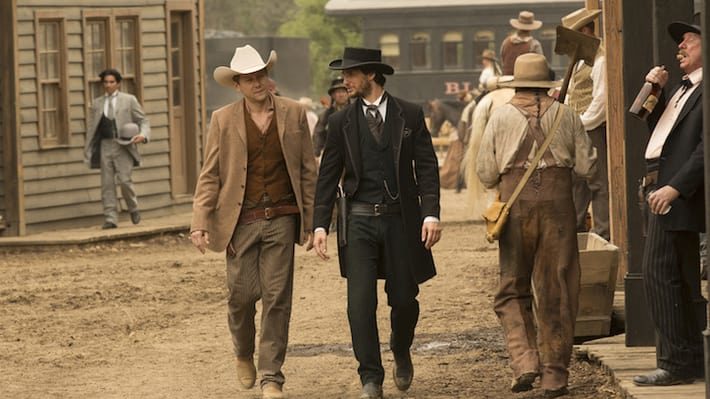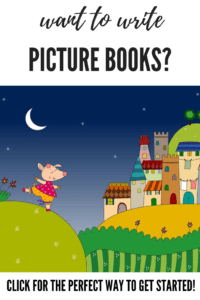
The advice “show, don’t tell” is certainly one of the most overused pieces of writing instruction. But it’s overused for a very good reason: It’s a core principle of great storytelling.
When a character’s simple action reveals more about him than five paragraphs of expository prose, you’ve rewarded your reader with something wonderful.
I’ve been enjoying the new HBO series Westworld. It’s well written, beautifully acted and very intriguing. In this week’s episode, the writers pull off a masterful bit of “show, don’t tell” that I wanted to point out, in hopes it will spark some ideas for your own writing.
Westworld takes place in a theme park in which human visitors get to relive the old west, thanks to hundreds of human-like robots. In this week’s episode, we’re introduced to two human visitors as they arrive at the park: William and Logan.
We get the idea pretty early that Logan is cocky, arrogant and most likely looking for trouble. But we aren’t so sure about William. He’s quiet and perhaps a bit intimidated by the experience. But how he’ll act once ensconced in Westworld is a mystery.
Until the writers pull of a spectacular “show, don’t tell” moment.
We follow William as he selects his wardrobe for his adventure. Some boots, a vest, a jacket. And then he comes to his final selection.
On one wall, a rack of black hats. On the other, a rack of white hats.
The camera closes in on William’s face as he ponders his decision.
The next shot is of William and Logan striding down Westworld’s dusty main street. Logan is wearing a black hat, William is wearing his newly chosen white hat.
And with that, we’ve learned volumes about these men and their intentions. One is there to be an outlaw, the other a hero.
And not a word of dialogue was needed. That’s showing, not telling.
(Image: HBO)
UPDATE, August 2020: In the four years since this was originally posted, we’ve all had a much-needed education in the danger of using white/black as stand ins for good/bad. Even if the concept of “good guys wear white hats, bad guys wear black hats” may not stem from a racial place (a common theory is that it “may be entangled with a fundamental and ancient fear of dirt and contagion that remains deeply wired in our neurons today”, it’s taken on new meaning that renders it inappropriate moving it forward.
So, while it’s doubtful that the writers of Westworld – or any other show – would use this particular metaphor if the script were written now, the point about the power of a small symbolic gesture to impart a greater meaning is the takeaway from this post, not the specific example.
But yes, let’s retire the notion of white and black as signifiers of good and evil. And let’s be grateful for the education we’re receiving that will help move toward a better society.

✏ Word Counts & Age Groups for Every Kidlit Category
✏ FAQs, Glossaries and Reading Lists
✏ Category-specific Tips, from Picture Books Through Young Adult Novels
✏ 5 Easy Ways to Improve Your Manuscript
✏ Writing For Magazines …and more!
This is a gift from the editors of Children’s Book Insider, and there’s no cost or obligation of any kind.
We will never spam you or share your personal information with anyone. Promise!






An excellent analogy. It’s wonderful what colors can conjure up in the mind.
Love your term ‘show – don’t tell’
Must now get back to my current project and do some ruthless editing !!!
• There’s a simple question you can ask of any written passage, to help you understand if it is showing and not telling.
•Can the lens of a virtual camera see it? If the camera can’t see it – it’s telling. If the camera can see it – it’s showing.
•There are exceptions of course. This virtual camera can’t see sounds, smells, temperatures or tastes. They must be described – but this is not telling.
•But on the whole, can the camera see it?
• There is a place for GREAT TELLING but it is based in emotion.
• Use telling when you can’t see it, smack it, weigh it or lick it . . . . or you want to describe the mood or an intuition or you want to create tension in the invisible.
• Telling forces a reader to stand outside a candy store window, able to see, perhaps, and hear what happens inside . . . but he remains outside.
• Showng invites the reader into the store to taste the bite of bitter chocolate or the tang of a lemon drop. The reader will feel the stretch in taffy; maybe even become mired in a mess of spilled molasses.
Thinking we should move away from calling white good and black bad, even if it is just hats.
Thanks for noting this Claire. I’ve added an addendum to the post to address this point.